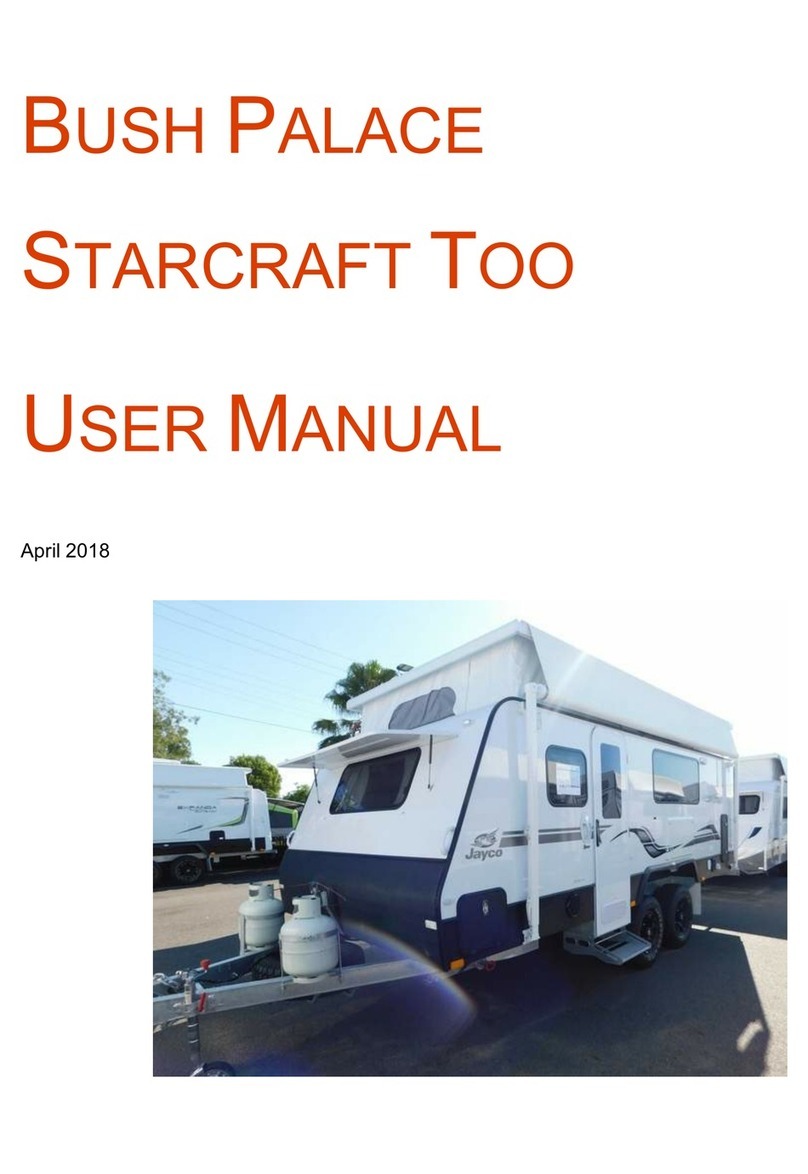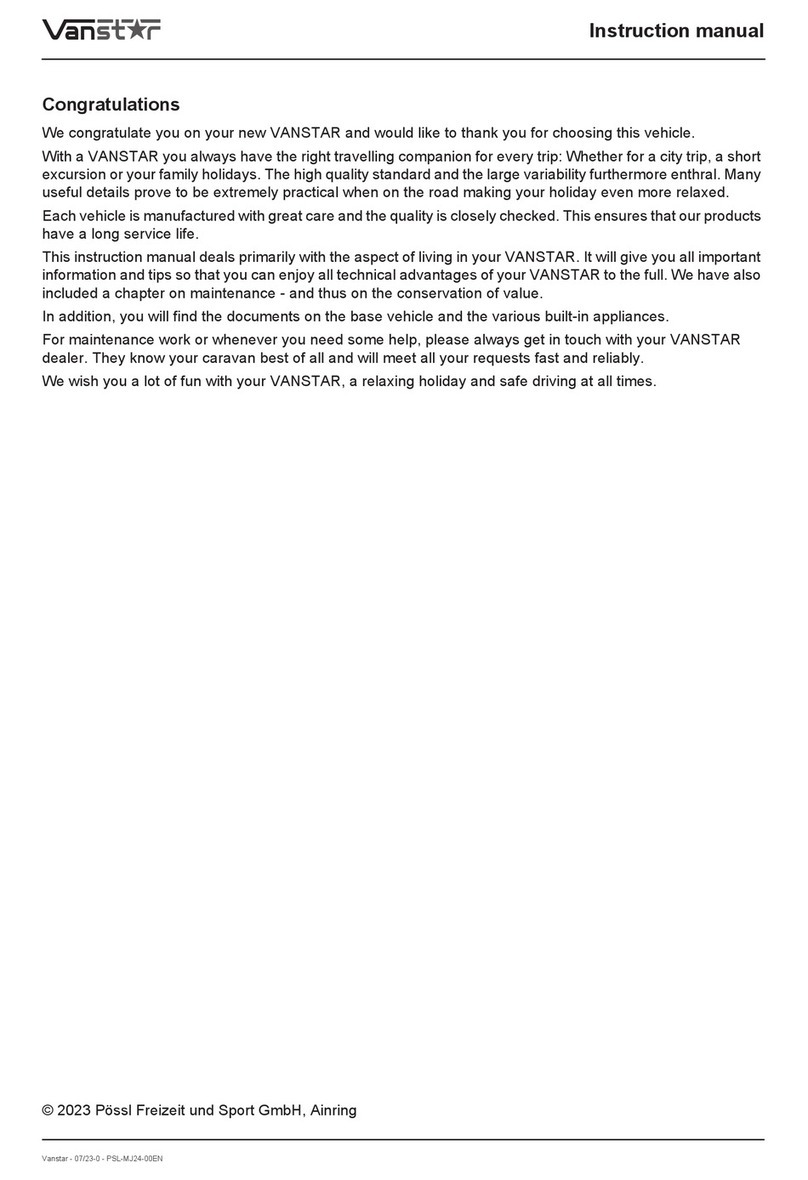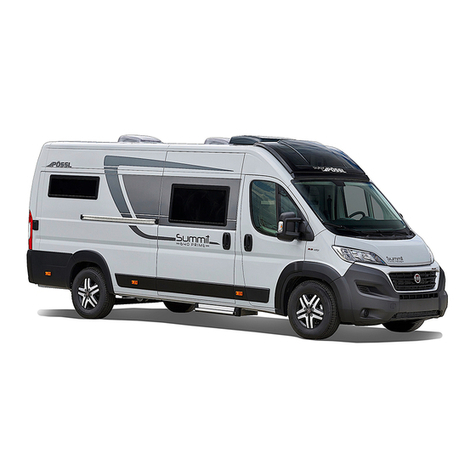
1Campstar - 03/23-0 - PSL-MJ23-00EN
1 Records . . . . . . . . . . . . . . . . . . . . . . . 3
1.1 Vehicle document . . . . . . . . . . . . . . . . . 3
1.2 Warranty . . . . . . . . . . . . . . . . . . . . . . . . 3
1.3 Inspection plan . . . . . . . . . . . . . . . . . . . 4
1.4 Inspection records . . . . . . . . . . . . . . . . . 5
1.5 Inspection certificates for electrical
inspection . . . . . . . . . . . . . . . . . . . . . . . 6
2 Introduction . . . . . . . . . . . . . . . . . . . 7
2.1 General . . . . . . . . . . . . . . . . . . . . . . . . . 8
2.2 Environmental tips. . . . . . . . . . . . . . . . . 9
3 Safety . . . . . . . . . . . . . . . . . . . . . . . . 10
3.1 Fire prevention . . . . . . . . . . . . . . . . . . 10
3.2 General . . . . . . . . . . . . . . . . . . . . . . . . 11
3.3 Road safety . . . . . . . . . . . . . . . . . . . . . 11
3.4 Towing. . . . . . . . . . . . . . . . . . . . . . . . . 12
3.5 Gas system . . . . . . . . . . . . . . . . . . . . . 12
3.6 Electrical system . . . . . . . . . . . . . . . . . 14
3.7 Water system . . . . . . . . . . . . . . . . . . . 14
4 Before the journey . . . . . . . . . . . 15
4.1 Payload . . . . . . . . . . . . . . . . . . . . . . . . 15
4.2 Television . . . . . . . . . . . . . . . . . . . . . . 18
4.3 Road safety . . . . . . . . . . . . . . . . . . . . . 18
5 During the journey . . . . . . . . . . . 20
5.1 Driving the Campstar. . . . . . . . . . . . . . 20
5.2 Driving speed . . . . . . . . . . . . . . . . . . . 20
5.3 Seat belts . . . . . . . . . . . . . . . . . . . . . . 20
5.4 Driver's seat and front passenger's seat21
5.5 Seating arrangement. . . . . . . . . . . . . . 22
5.6 Operation of heater and cooker. . . . . . 22
6 Setting up the Campstar . . . . . 23
6.1 Handbrake. . . . . . . . . . . . . . . . . . . . . . 23
6.2 230 V connection. . . . . . . . . . . . . . . . . 23
7Living. . . . . . . . . . . . . . . . . . . . . . . . 24
7.1 Flap for 230 V connection, square . . . 24
7.2 Ventilation . . . . . . . . . . . . . . . . . . . . . . 24
7.3 Sliding door . . . . . . . . . . . . . . . . . . . . . 25
7.4 Rotating the seats . . . . . . . . . . . . . . . . 25
7.5 Bench seat . . . . . . . . . . . . . . . . . . . . . 26
7.6 Table . . . . . . . . . . . . . . . . . . . . . . . . . . 28
7.7 Light switches and sockets . . . . . . . . . 29
7.8 Pop-up roof . . . . . . . . . . . . . . . . . . . . . 29
7.9 Kitchen unit . . . . . . . . . . . . . . . . . . . . . 34
8 Gas system . . . . . . . . . . . . . . . . . . 36
8.1 General . . . . . . . . . . . . . . . . . . . . . . . . 36
8.2 Gas bottle . . . . . . . . . . . . . . . . . . . . . . 37
8.3 Establishing the gas connection . . . . . 38
8.4 Changing gas bottles. . . . . . . . . . . . . . 39
8.5 Automatic gas isolator tap . . . . . . . . . . 40
9 Electrical system. . . . . . . . . . . . . 41
9.1 General safety instructions . . . . . . . . . 41
9.2 12 V power supply . . . . . . . . . . . . . . . 41
9.3 Panel PC110. . . . . . . . . . . . . . . . . . . . 44
9.4 Distribution module DS300 . . . . . . . . . 44
9.5 Charging unit. . . . . . . . . . . . . . . . . . . . 45
9.6 Booster . . . . . . . . . . . . . . . . . . . . . . . . 45
9.7 230 V supply . . . . . . . . . . . . . . . . . . . . 46
9.8 Fuses . . . . . . . . . . . . . . . . . . . . . . . . . 47
10 Appliances. . . . . . . . . . . . . . . . . . . 49
10.1 General . . . . . . . . . . . . . . . . . . . . . . . . 49
10.2 Gas cooker . . . . . . . . . . . . . . . . . . . . . 49
11 Sanitary fittings . . . . . . . . . . . . . . 51
11.1 Water supply, general. . . . . . . . . . . . . 51
11.2 Water canister. . . . . . . . . . . . . . . . . . . 51
11.3 Waste water canister . . . . . . . . . . . . . 52
11.4 Water system . . . . . . . . . . . . . . . . . . . 53
12 Care . . . . . . . . . . . . . . . . . . . . . . . . . 54
12.1 External care. . . . . . . . . . . . . . . . . . . . 54
12.2 Interior care. . . . . . . . . . . . . . . . . . . . . 54
12.3 Instructions for care of the pop-up roof 55
12.4 Winter care . . . . . . . . . . . . . . . . . . . . . 56
12.5 Lay-up. . . . . . . . . . . . . . . . . . . . . . . . . 56
13 Maintenance . . . . . . . . . . . . . . . . . 59
13.1 Official inspections . . . . . . . . . . . . . . . 59
13.2 Inspection work. . . . . . . . . . . . . . . . . . 59
13.3 Maintenance work. . . . . . . . . . . . . . . . 59
13.4 Spare parts . . . . . . . . . . . . . . . . . . . . . 60
13.5 Vehicle identification plate . . . . . . . . . 60
13.6 Warning and information stickers . . . . 61
14 Troubleshooting . . . . . . . . . . . . . 62
14.1 Electrical system. . . . . . . . . . . . . . . . . 62
14.2 Gas system . . . . . . . . . . . . . . . . . . . . . 63
14.3 Cooker . . . . . . . . . . . . . . . . . . . . . . . . 64






























